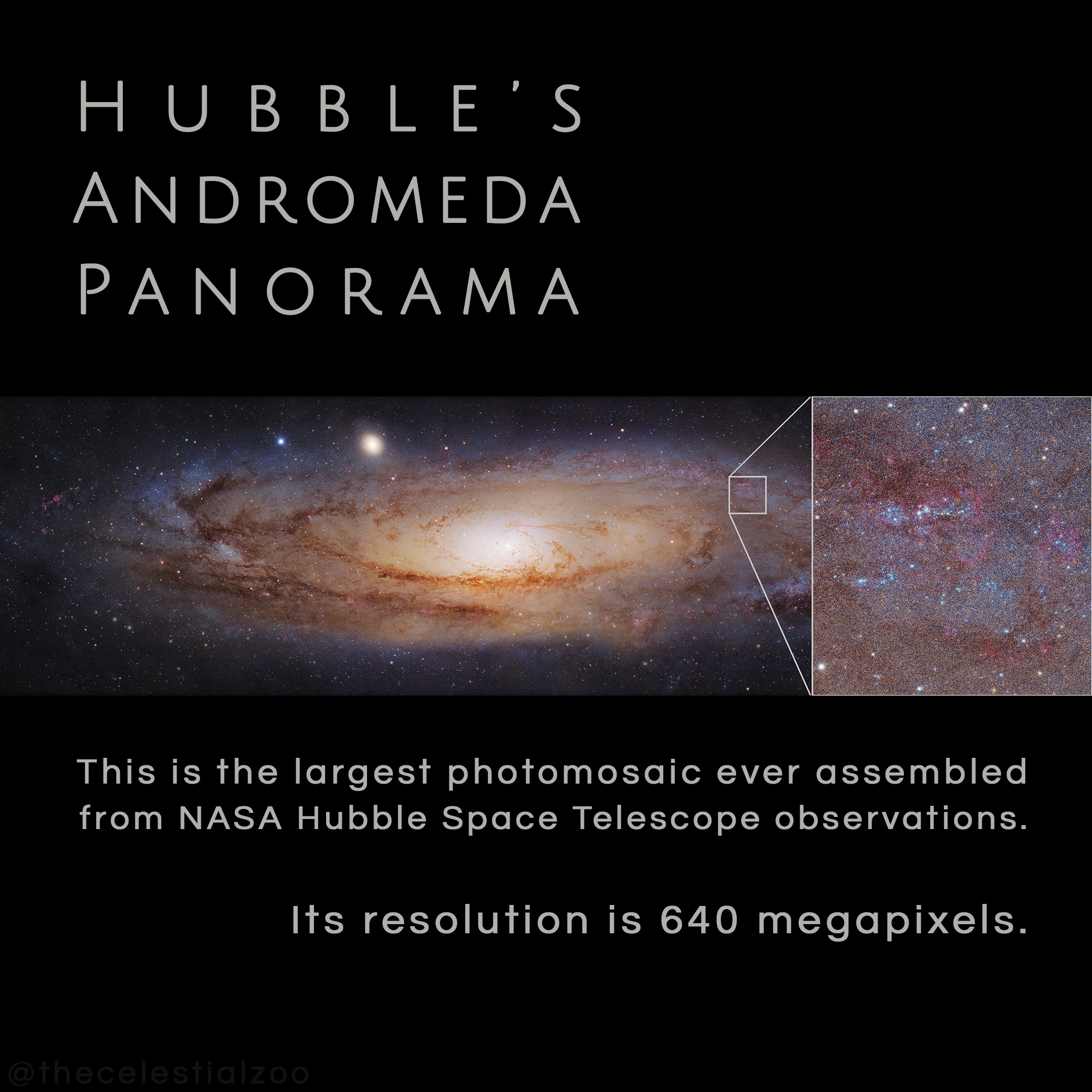Hubble’s panoramic view of the Andromeda Galaxy
This is the largest photomosaic ever assembled from NASA/ESA Hubble Space Telescope observations. It presents a sweeping panoramic view of our neighboring Andromeda galaxy, located 2.5 million light-years away. Creating this vast and colorful portrait took more than a decade and required over 600 individual Hubble snapshots. The mosaic reveals the radiant glow of 200 million stars, spread across an astonishing 2.5 billion pixels. To complete the composition and depict the galaxy’s full disk, missing regions were filled with two public domain ground-based images captured by astronomers Kees Scherer and Stephen Rahn. The full panorama canvas is 50270 x 12850 pixels or 646 megapixels.
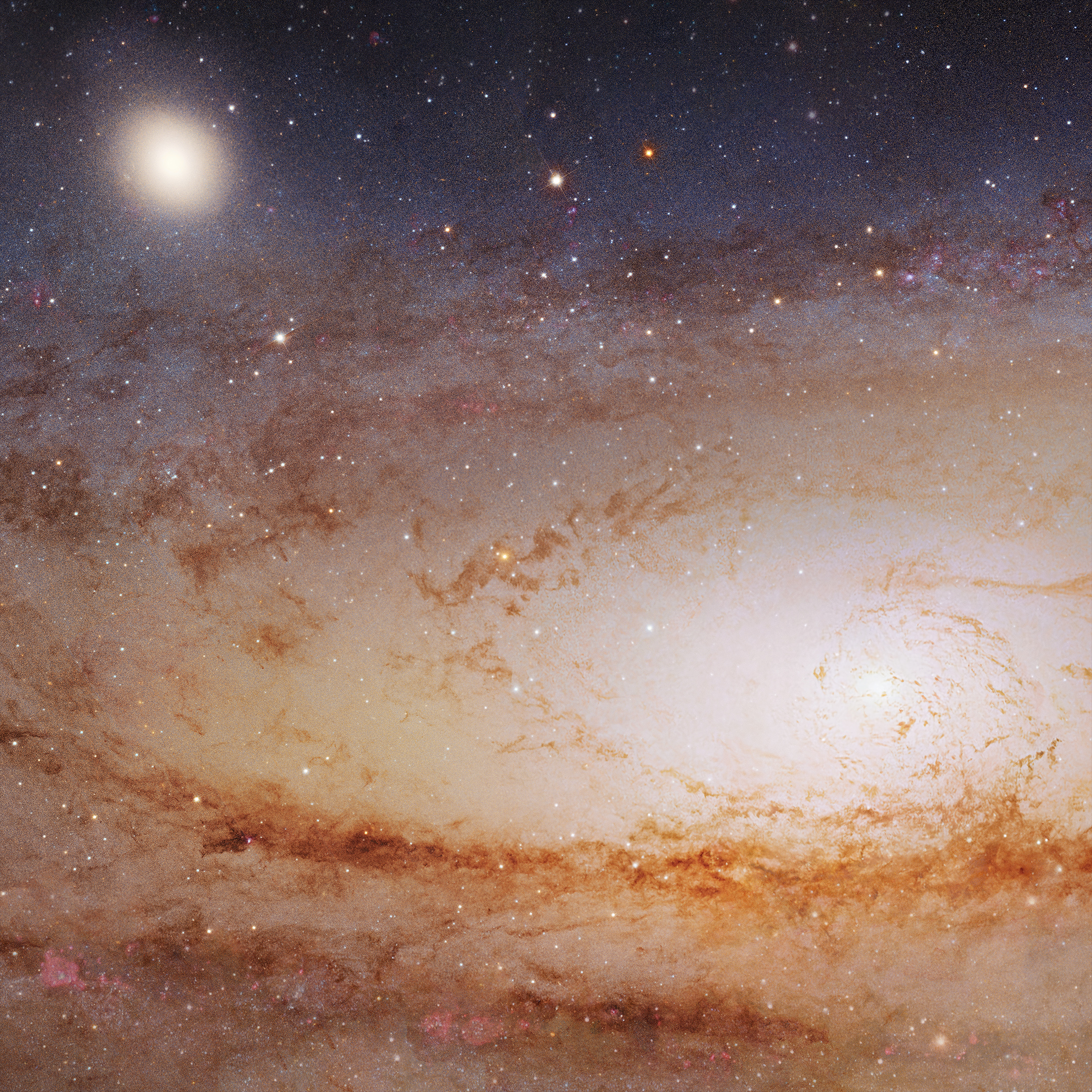
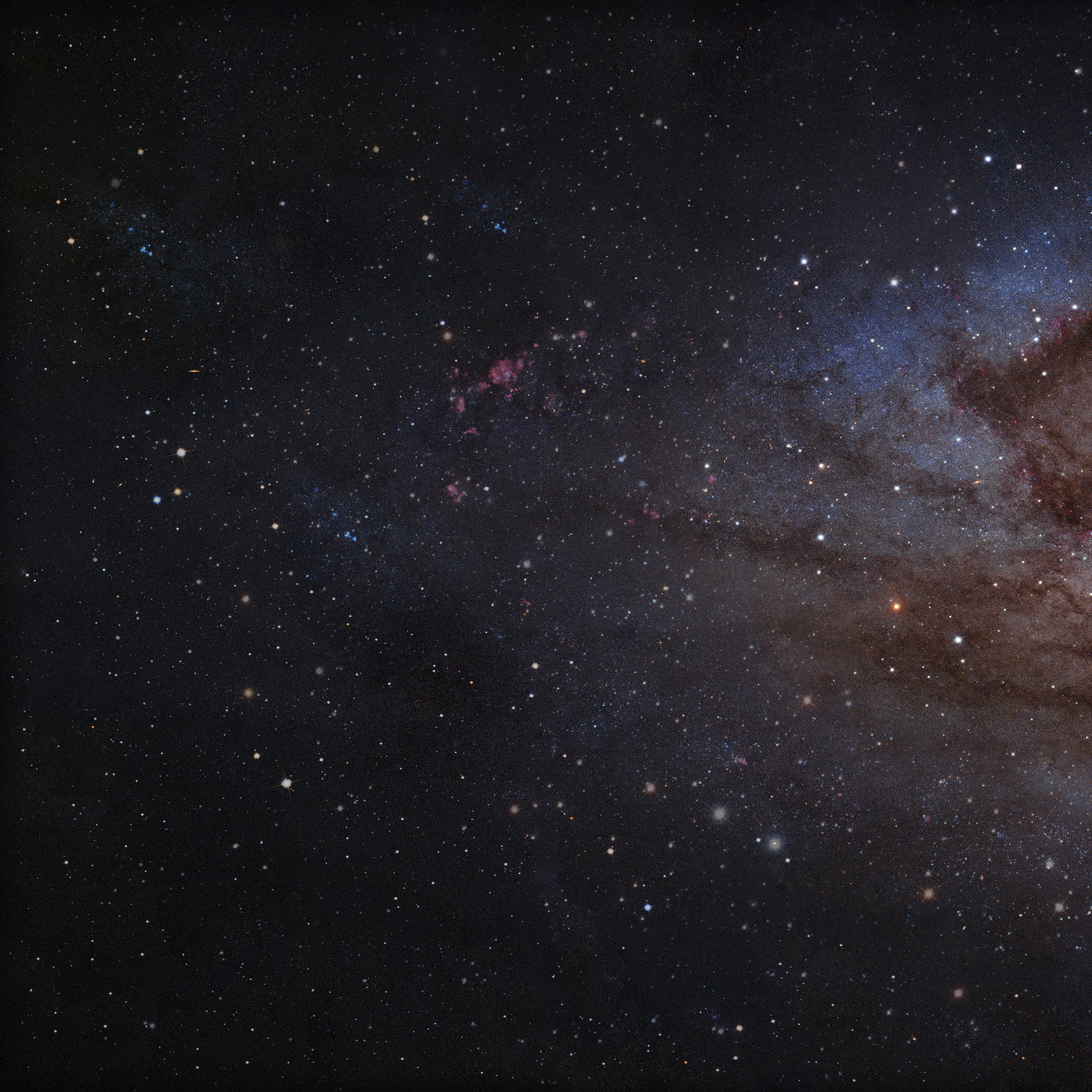
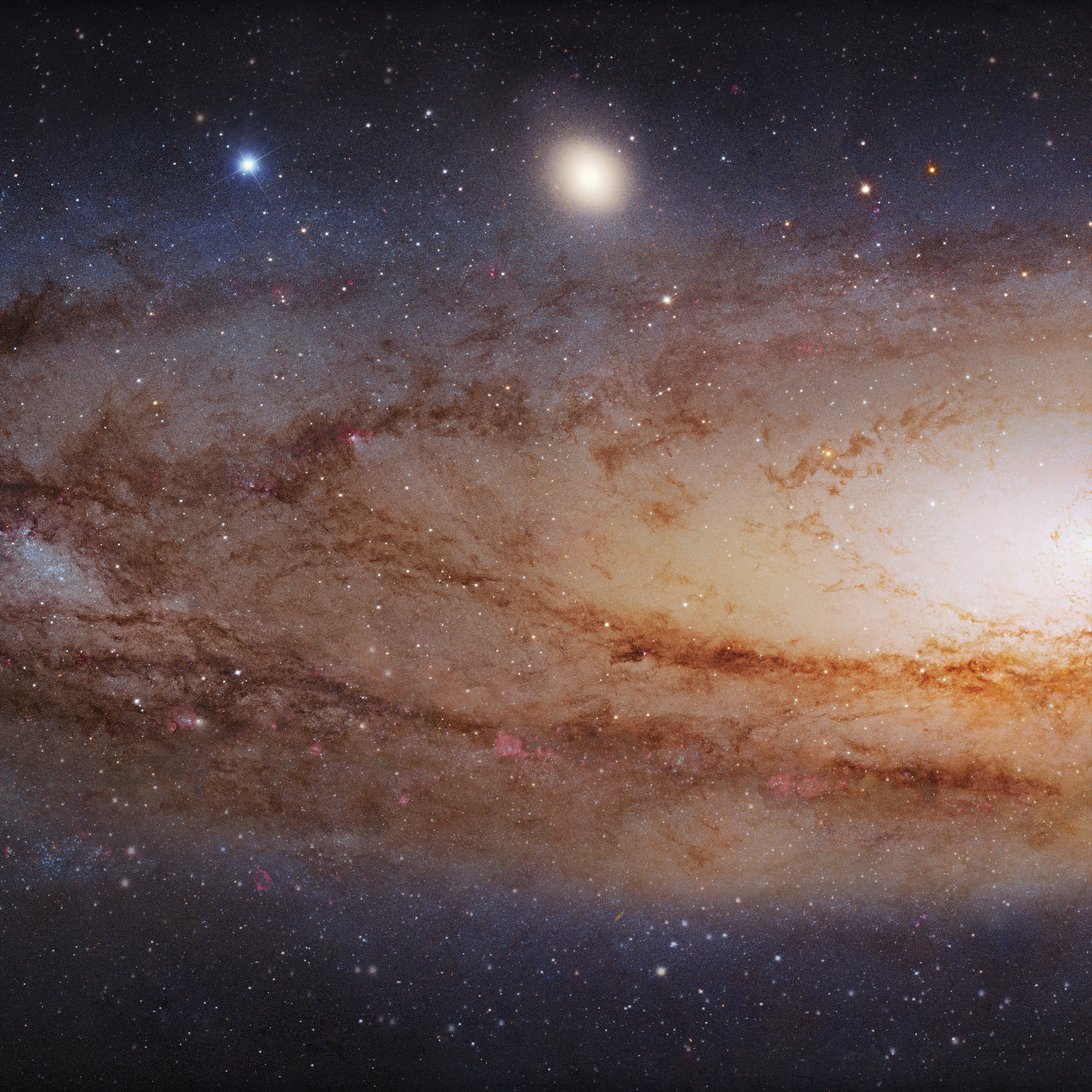

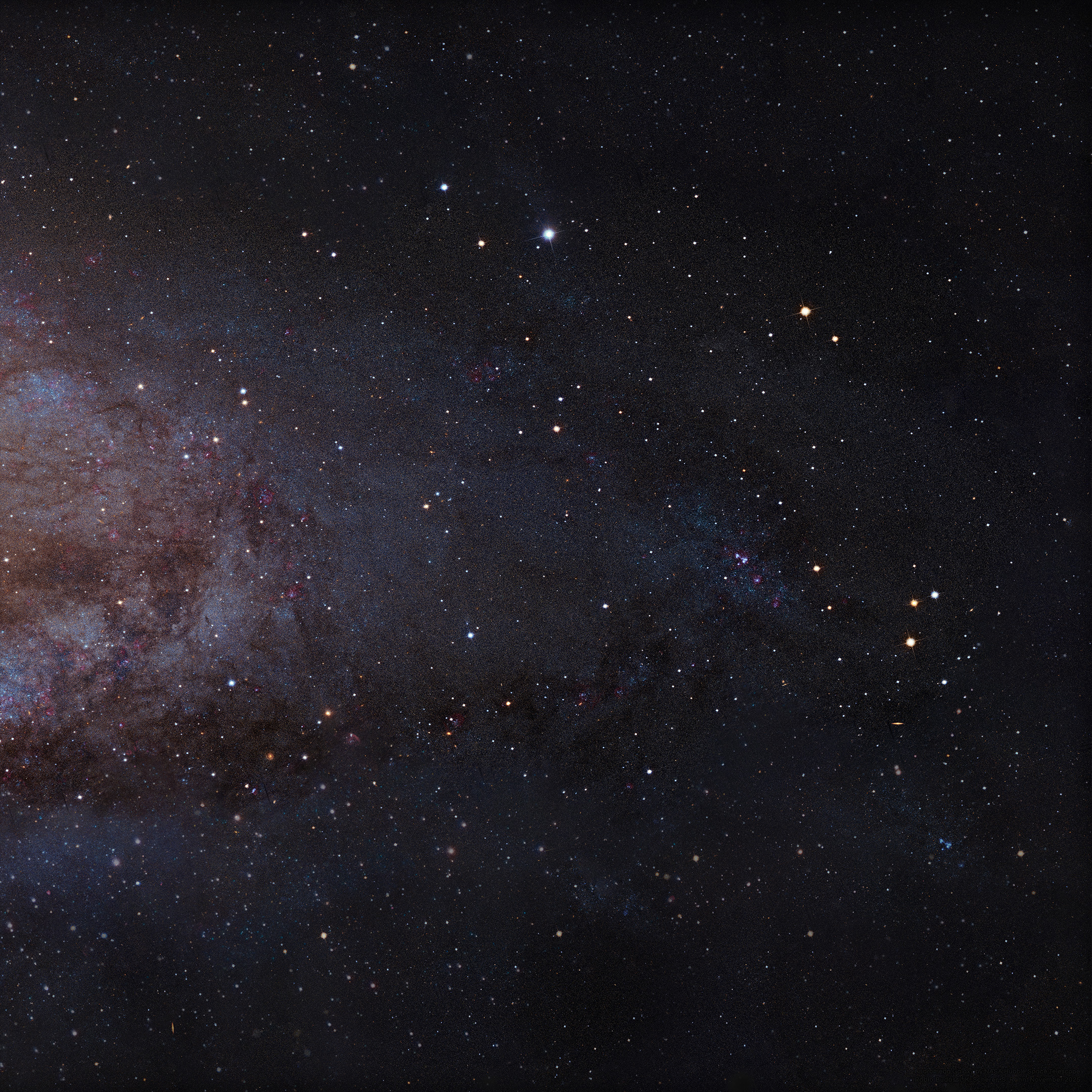

▾ zoom and explore the full picture ▾
Composite and processing by Pablo Carlos Budassi, November 2025.
Data for most of the image are from the NASA/ESA Hubble Andromeda Galaxy M31 Mosaic, 16 January 2025. Credit: NASA, ESA, Benjamin F. Williams (University of Washington), Zhuo Chen (University of Washington), L. Clifton Johnson (Northwestern University), Joseph DePasquale (STScI).
Data for the remainder of the disk are from a photograph taken on 20 December 2019 by Kees Scherer in Tomar, Portugal.
Data for the surrounding regions are from a photograph taken on 31 December 2021 by Stephen Rahn in Acworth, GA, USA.

Covering the entire southern and northern celestial sphere, this gorgeous starscape serves as the ultimate high-resolution view of the cosmic landscape that surrounds our tiny blue planet.
Using data from GigaGalaxy Zoom project (ESO), and post-processing by Pablo Carlos Budassi we are presenting this new render with our particular style in terms of color and proportions.
Andromeda Panorama
* All products and downloads are delivered in excellent quality and without watermarks.
* This was a high resolution 360-degree panoramic view of our galaxy. If you want to see the galaxy from above, check our Map of the Milky Way Galaxy


